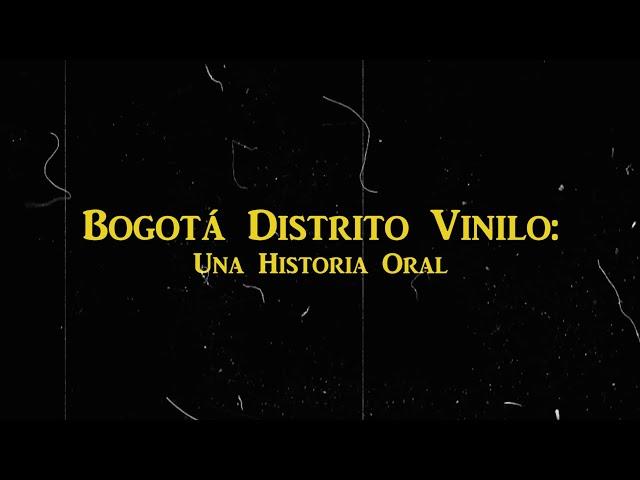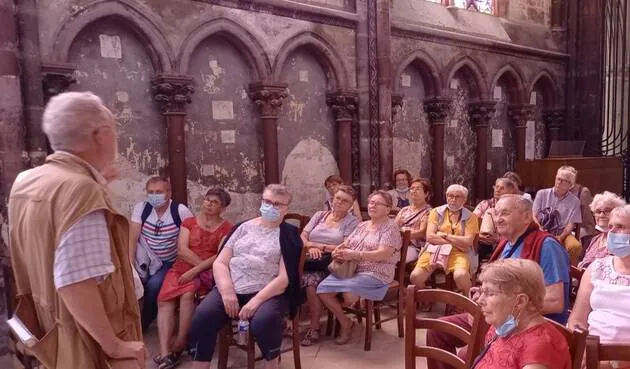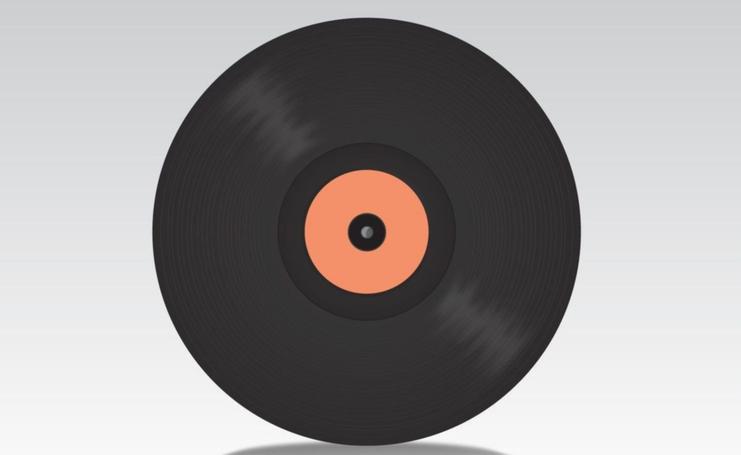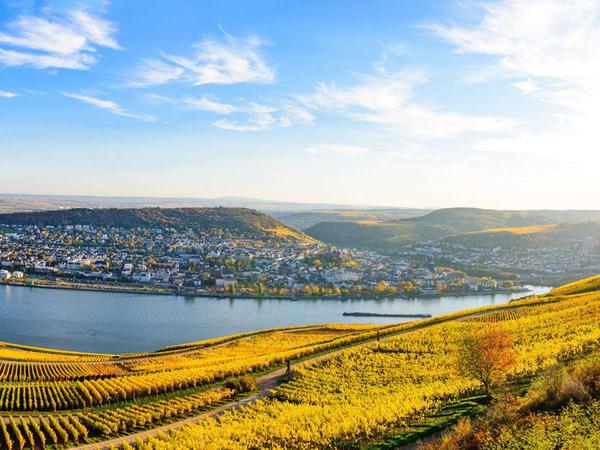Bogotá Vinyl District: an oral history of a musical passion
At the end of the 1970s, an immigrant combo of music lovers, collectors, journalists, and vendors settled in one of the most emblematic and hectic alamedas in Bogotá. According to what Carol Ann Figueroa tells us in her scrupulous chronicle 'Calle 19: la Esquina del Movimiento', characters such as Pedro Vargas, Miguel Granados, Luis Cardona, El Viejo Efra and Sigifredo Farfán “had built their own place in that gray city to which they had arrived with nothing, a parallel world made by hand in the center of the city, whose record treasures attracted a loyal clientele that would be joined by students from neighboring universities, as well as artists, broadcasters, intellectuals and bohemians who worked or they had been invited to Caracol Radio, whose facilities were located on that same street 19 with Carrera Eighth”.
Figueroa points out that in the narrow labyrinth of booths that were stationed there, it was common to find from Lucho Bermúdez or Fruko to Pacheco, who went either to buy compilations on cassette, or to check if their records had been properly pirated.
Although during the 1990s these good customs seemed to vanish, and the activity that revolved around vinyl lost its vigor, for a decade the vinilera convert has settled in Bogotá, a city that has gained its prestige among native and foreign enthusiasts on account of a plethora of fancy shops, mixed DJ and collectors clubs, hidden gem caches, artisanal record labels, fairs, basement parties, and other parlor parties: a whole community mesmerized by the magical ridges of these round objects.
One of the fervent is Mario Felipe Ortega, political scientist, disc jockey and hard-working teacher, who one day decided to tell what was behind the vinyl movement in Bogotá. After several years of production, 'Bogotá Vinyl District: an oral history' finally comes to light, a documentary directed by Rodrigo Armenta.
Felipe, better known on the circuit as PincheDJ, told us the details of his wine adventures.
What is the earliest memory he has of vinyl in his hands?
In the house where my parents still live -and in which I was born, grew up and lived until after the Javeriano cartoon- there is a corner next to the stairs that lead to the second floor. This is how it was designed from the initial plans and designs. The heart of the seventies. To this place where bottled drinks, books and records were always stored, we call it unfailingly to date, "the liquor store". There is a family album photo, in which I appear with my brother in the corner of the decanter. The discs are scattered on the floor and we are playing with them. My brother and I had only a few years to live to date. I maybe months. The discs that surely went to the EDIS truck, did not survive the era of the CD; surely they were records by Garzón and Collazos.
I transfer the question to the experience of my daughter Lourdes. She lives the discs and the corresponding devices from her mother's womb. They somehow surround her existence.
Do you remember the stores where she went to buy vinyl? Do you remember the first one you bought?
I must say that my brother's and mine's collection was always made up of cassettes. They were cheaper than records and also in my house there were no record players for a long time. We managed to have about five hundred. Most are still in my house. Some, the gringos, "the ones to show", have a special place in my apartment: KISS, Maiden, Helloween, Destruction, Dangerous Toys, Sacred Reich, etc.
Supply centers: Bambuco, Prodiscos, La Rumbita, San Andresito on 38, Omni 19, Vía Libre… and of course Musiteca on 15 next to the Viceroy and then Antiphon on 85. Of course we were clients of Saúl Alvarez (RIP ) and brothers.
Our real first vinyl was late: 'Clásicos de La Provincia', by Carlos Vives. Tastes began to change in those years. That record passed into other hands still in school days and I got it again with the “return of vinyl”. Surely in 93 we got it in Bambuco on Bulevar Niza.

Like all of us who have already crossed the forty-year-old barrier, vinyl ceased to matter to us for a while and we fell in love with the CD. When and how did you become interested in it again?
Through my partners at Radio Mixticius, back in 2011: Silvie Ojeda, Andrés Aceves and Lucho Guillot. They started getting awesome imported vinyl and playing it on the radio and at parties. They were usually records of modern African music pressed in Europe. In one of those celebrations I heard Peruvian chicha for the first time in my life. She played it Deejay GarNika on the turntables. After a couple of weeks I was hooked on the vinyl wave, sponsored by GarNika, who at his house sold me the first records of those exciting years. There were about twenty: 'Cartagena Caribe', by Wganda Kenya, was one of them.
How does PincheDJ appear, his alter ego who plays records?
Following up on GarNika's patronage, he encouraged me to start playing records at his parties. The first time was at a Matik Matik anniversary. It couldn't have been anywhere else. That night I alternated with various characters. Among them Mario Galeano. Big leagues and in my “debut”. The last song I put on that night before giving the turn to Gala Galeano was “Yiri yiri bom” by the Beninese singer Gnonnas Pedro.
Vanesa Monroy, who later worked on the documentary 'Bogotá: Vinyl District', invited me to play music at a launch event for a short film that she had recorded. It was in La Ventana, a place that has now disappeared that was located in Zona T. She was the first person who asked me: and what is your DJ name? I replied to him after a few days.
The name PincheDJ is inspired by Eblis Álvarez's "Disco DJ of Love". It is a contemptuous look at myself, as well as a microgroove puncturer. As a PincheDJ I have come to alternate with characters like Quantic and Cut Chemist. It was a night in the middle of Petronio. Gifts of life and collector madness.
Bonus : Through Silvie Ojeda, a Xaverian companion and great friend since the nineties, I had access to the voltage of Mario Galeano, Eblis Álvarez, Pedro Ojeda and Javier Morales since before the Vallenato Polyphonic Ensemble and the La Constellation Sextet. At that time his projects were La Plaza and Jazz Circular. They are the backbone of our tropical-experimental vinyl scene.
What is the most absurd thing you have done for a record?
The most obvious thing is to pay a lot of money. I left 300 bars in the Collector's Gallery to get a copy of 'Let's Ball' (1967), by Joey Pastrana, whose name, by mistake, appears in the credits as Pastrano. I would die and die for 'Rumbón Melón', where Ismael Miranda is heard very pelao.
More ridiculous stuff: buying records and sneaking them into the apartment, without my wife noticing. She knows I do it, but not when she does it. Or so it leads me to believe.
Get into remote locations rich in microfauna, microflora and nebulous effluvium, to find disks. I have worn clothes that I no longer wear for sale to venture into those places. A couple of times. I will not do it again.
The truly absurd thing is, plain and simple, collecting those magical items!
What is the origin of 'Bogotá Vinyl District: an oral history'?
It has to do with the vinyl era released by Radio Mixticius. Perhaps it was in 2013 or 2014 that while I was throwing balloons in the shower, it occurred to me to do an investigation that would report the vinyl scene in the city, in the framework of my work as Director of the Center for Studies (CES) in the Gymnasium Country of Bogotá. . The idea began to materialize when Rodrigo Armenta, a film professional from the National University, arrived at the school. He was the accomplice and perfect partner to carry out the effort. Likewise, Luz Helena Aljure and Carolina Ferro, our heads at the educational establishment, enthusiastically supported the idea.
We visited parties, private collections, festivals, stores of all colors and flavors, we met many people -and reaffirmed our friendship with others- recording and interviewing. In the process I ended up definitively mutating into the pathological collector called PincheDJ.
How did you finance the documentary?
Basically thanks to the school: they were flexible with our work time and they also put the budget to travel to different cities that we arrived with Don Pablito, our main driver. To this we must add that they made recording and editing equipment available to us. Minor expenses were on us... including the records we found along the way.
Why did the premiere take so long?
Just before the running of the bulls, we managed to present the documentary at the Universidad del Valle and we were ready to start in Mexico in March of last year. We would go to present it at the Fonoteca Nacional, at several universities and at wine and wine making combos. For obvious reasons the matter was suspended.
On the other hand, the recording and editing process took longer than we had originally budgeted. Similarly, the making of the documentary competed with other work and personal responsibilities. At one point I was afraid that the material would not come out of the memory stick. Finally, Rodrigo, in a titanic job in front of the screen, managed to make it happen. And just at that moment the pandemic intervened.
Andrea Antón, Alejandra Fierro Fleta and José Arteaga, from Radio Gladys Palmera, “unlocked the pandemic knot.” They supported us in the publication and finally the documentary saw the light before the public. It no longer belongs to us; It belongs to whoever appropriates it and “gives it the opportunity”.
How did they draw this very particular map of Bogotá?
It was part intuitive and part taken directly from my experience as a budding collector. Following the inertia of the investigative process and Rodrigo's nose, we cataloged stores, private collections, DJs, researchers, music lovers, markets, shopping areas, events-parties, record labels, Festivals and Cultural Markets, machine technical service places, etc. A very varied jungle in manifestations.
Our cartography, which is far from being exhaustive, presents the richness of a complex and living phenomenon, rich in aesthetics, technologies, identities and creative dynamics.
In the process of making the documentary, I wrote the chronicle 'Bogotá, music on vinyl & diapers', which appeared in Astrolabio, the school magazine. There is contained part of the history of this map.
And now that it's finally out, what will happen to the documentary?
There are plans in draft to show it in Spain, Mexico and, of course, Colombia. It is a topic that is generating a lot of interest today. An idea from Juan Pablo Varela – better known in the vinyl scene as Dirty Salsa – is that it would be very appropriate to bring the protagonists together again to talk about how the phenomenon has changed since those days when we did the interviews. For example, today women attract all the spotlight: Alejandra and Andrea in Spain; Vinileras Women in Mexico; Los Curlos in Bogota; Cecilia DJ CecYza in Peru and Brazil; Claudia Lawrence of León City Sounds in Washington and Peru. They are not in the documentary: today their presence would be unavoidable.
We do not rule out a boat for El Zócalo!
Why is Bogotá considered a must-see destination for those who are obsessively looking for vinyl?
Colombia has been and is a land blessed by music. The record labels and production plants, scattered throughout our national geography, left behind mountains of jewels. It still happens today. The last album “made in Bogotá” that came to me through Daniel Michel from the Mambo Negro label is the single “Bruja” / “Guayabo”, by La Perla. In short, a large volume of records from more than half a century of musical production have ended up in Bogotá due to different centralist inertias. Traditional and non-traditional musicians, for decades, have ended up migrating from the provinces to turn their musical ideas into reality here in the capital. Many merchants from different regional origins have arrived with truckloads of records to set up their businesses here. Many collectors and DJs have also ended up living here in La Nevera.
To summarize, cities like Barranquilla, Medellín and Cali have been pillars of the musical and record power that is Colombia, but Bogotá as the economic center of the country, responsible for a significant percentage of the national GDP, and epicenter of university students and restless intellectuals and night owls , becomes, despite its frigid and schizophrenic climate, a highly attractive destination for those who pursue the melody on pasta.
A dreaded question that will put you in trouble: what is the favorite album of those who inhabit your collection?
I'm going to cheat on the question. My anti-favorite album is 'Porsuigieco' (1976), that project that Charly Garcia –together with Maria Rosa Yorio, Nito Mestre, Raúl Porchetto and León Gieco- made in the mid-seventies before La Máquina de Hace Pajaros. I searched heaven and earth for it in Buenos Aires in 2004 and I couldn't find it. Not even on CD. Shortly after I found it on the internet and a friend brought it to me from Buenos Aires in exchange for some bottles of Coca-Cola that I sent to the person with whom I made the deal. Surely some deranged cocacolista collector.
One fine day I decided that I no longer wanted to have it, since I don't have Argentine records. I made an absurd deal for very little money that I spent on records. I don't even remember what they were. The album could be worth a small fortune in a few years, but I got rid of it…even though I'm a total fan of Charly García! The vinyl was perfect: unda, sleeve, and internal printed envelope. Beautiful and giant photos on the inside that opens like a book. And the best: it brought an original photo in which León Gieco appeared, Orlando, the host of the Vertigo store, took it. He did a good deal at my expense. He will already be in the collection of some Argentine rock maniac. It's fine there! The discs spin very strangely.
What are the five albums -or songs- you most long for at this moment?
“Ololiuqui”, by Chaparro and his Orchestra, published in seven inches by the Melser label. In the same format I would like to have the single “Crees que soy sexy” / “Stayin' alive”, recently pressed by the Spanish label Vampisoul. Two songs: “La vamo'a tumbá”, by Grupo Saboreo and “Don't go loose it baby”, by Hugh Masekela. Finally, the album 'Face to face', by Canadian Gino Soccio.
If you were a guide for a day, what would your wine route through Bogotá be like?
To finish, share with us three covers that you consider fabulous and unforgettable.
'Palenque Records AfroColombia Remix Vol. 1 and Vol. 2' (Hot Cookies, 2016-2018)
Cover and back cover by William "El Maestro" Gutiérrez. Caribbean picotera aesthetic at its best. Dance, instruments, DJs, astronaut suits, spaceships. Hot Cookies and ChampetaMan portrayed. Better impossible.
'Lightning breaker' (Discrepant, 2015)
Album by the group of the same name, led by the great drummer, collector, DJ and teacher, Pedrito El Pulpo Ojeda. The “tree man” that appears on the cover was imagined and painted by Mateo Rivano. Appreciate it yourself and be mesmerized.
'Pakiró' (Zeida/ Codiscos, 1992)
Feliciano Chano Ramírez was a Quibdoseño singer who, at a very mature age, managed to record his own album in the early 1990s. He was produced by the cocky Alexis Lozano, who gave a reggae and funky touch to the chocoana shawm. On the cover Chano is seen happy with life with headphones on. He shows in his mouth a few decayed teeth. The reality of the anonymous patrimonial musician, crossed by poverty, but with unwavering flavor and joy. A raw, genuine and beautiful cover.


